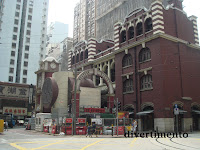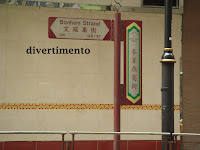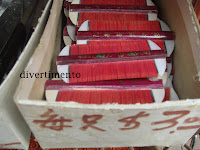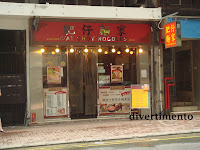Reading the South China Morning Post’s Health Post supplement yesterday, I was reminded of an incident some years ago, during one of my children’s only visit to the Student Health Service provided by the Department of Health. It was the only visit because there was no way I'd go back. My daughter was 5. After she was weighed and measured she went through some rudimentary hearing and eye test. At the end of this process, we were seated at a desk with a serious looking nurse seated on the other side. The good news? Her hearing and eye sight were fine. However…. and at this point the nurse looked intently at my little 5 year old and said to her “You are overweight-do you know what it means? That means you are too fat. You have to eat less.” I was flabbergasted! And do you know what? She was 105 cm and weighed 17 kg and was the second smallest child in class by height and weight. How was a 5 year old to understand that by one measure i.e. some government determined chart, that her weight was statistically a slightly higher percentile than her height? And what was worse was that my 5 year old was already a finicky eater and it was a struggle to get her to eat any let alone enough proteins. Another mum was equally furious. Her daughter was much taller and bigger framed than mine, taking after her father who is an Englishman. This little girl was subjected to the same treatment and instantly burst into tears. Don’t get me wrong, Neither my daughter nor I have weight issues. I am 1.57 meters and weigh 48 kilograms. My daughter is now about the same.
Firstly, is there such a thing as an “ideal weight”? The most obvious determinant of a person’s weight is height and built.
The generally accepted measure of whether your weight is appropriate for your height used by the medical profession is the Body Mass Index. This is calculated as weight in kilograms divided by the square of your height in meters ie kg/m2. So in my case, I have a BMI of 19.5.
Generally, the recommended range ie your ideal BMI should be within 19-25. If your BMI is below 19, you are considered underweight. A BMI ratio of 30 and above is categorised as obese. However, in Hong Kong, a stricter standard is adopted. A BMI of 23-24.9 is classified as overweight and 25-29.9, obese (moderate). BMI ratio of 30 and above qualifies for severe obesity. In the article by Eileen Aung-Thwin “One index that doesn’t fit all” she writes that researchers from Taiwan and the US found that Chinese men and women with a BMI of 24 to 25.9-overweight by Hong Kong’s definitions-had the lowest risk of death. Food for thought.
Where exactly the cut off points should be may be debatable but if you track your own BMI and notice it creeping up, then at some point you should be able to tell yourself “enough is enough”. Not scientific I know but at least it’s no one telling you that you are fat.
So, what if you are “big boned”? Does muscle weigh more than fat?
Experts say frame size i.e. whether you are “big boned” or “petite” does not make much difference on the scales. Usually, it only affects weight by 5 or so kilograms.
Of bigger influence on healthy weight range is the proportion of weight due to muscle as opposed to fat. Yes, muscle does weigh more than fat, so if you exercise regularly and are gaining weight, you may be gaining weight in a healthy way. There are several ways to check if the weight you are putting on is fat or muscle. There are special scales that measure your body fat percentage. Perhaps you have heard of fat calipers? Why not try the simple pinch test – using your thumb and index finger, see how much skin you can grasp along your midriff. So, if as you gain weight, your belly is yielding a thicker skin fold during your pinch test, it is definitely not muscle you are gaining! In any case, the fold of skin should not exceed 2.5cm.
Still not sure where you stand? Then try the “apple or pear” test ie. the Waist/Hip Ratio. Use a measuring tape to measure your hips at the widest part of your buttocks. Then measure your waist where it is smallest, usually just above the belly button. Then divide your waist

measurement by your hip measurement. Women should have a ratio of 0.8 or less; men should be no higher than 1.0. If your ratio is higher than these ideals, you are an "apple" with excess fat stored in your abdomen.
Are you an apple?
Stay Healthy!






























